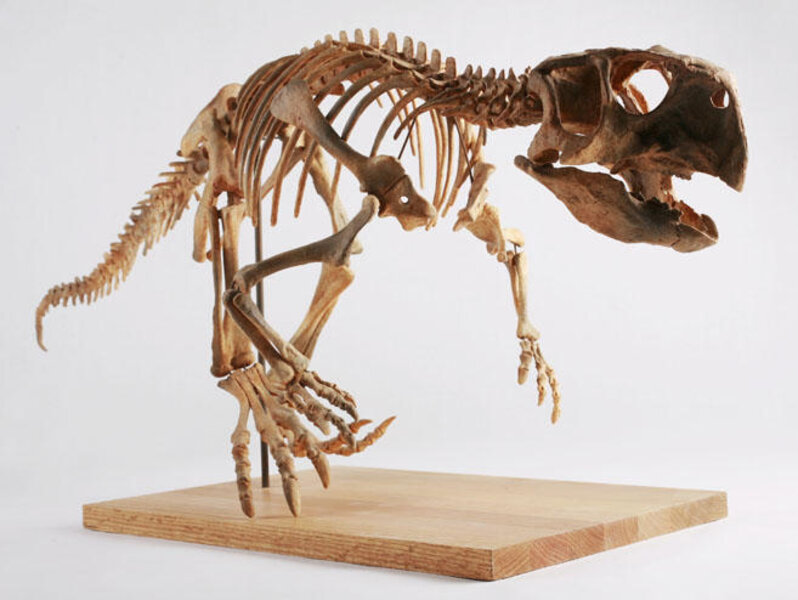'Parrot dinosaur' walked on all fours, then graduated to two
Loading...
A baby in a dinosaur costume can do a laudable imitation of how a young dinosaur might have behaved.
New research suggests that Psittacosaurus, the 'parrot dinosaur,' walked on four feet – and then two feet – some 100 million years ago in what is now China. It would have grown up much like the modern human, at first exploring its world on all fours, like a toddler, and then graduating to upright motion.
Qi Zhao, a Ph.D student at the University of Bristol and a researcher at the Institute for Vertebrate Paleontology in Beijing, studied a total of 16 fossil specimens ranging in from less than 1 year old to 10 years old. He found that the 1-year-old Psittacosaurus specimens had long arms and short legs, meaning that the toddler dinosaur was biologically equipped to walk on all fours.
The arm bones showed continued growth in the dinosaurs between 1 and 3 years old, but the arm growth was dwarfed when the animal’s legs began to rapidly grow between 4 and 6 years old. At the age of 6, the Psittacosaurus had legs twice as long as its arms and would have walked upright.
That discovery, published in the scientific journal Nature Communications, suggests not only that individual Psittacosauruses went from four to two legs, but that the species had also evolved over time from four-legged adults to two-legged adults, adapting to environmental pressures.
“Having four-legged babies and juveniles suggests that at some time in their ancestry, both juveniles and adults were also four-legged, and Psittacosaurus and dinosaurs in general became secondarily bipedal,” said Mike Benton, a professor at the University of Bristol.
Measuring dinosaur growth is difficult, since enough samples are seldom available to track the species’ development through its life cycle. Psittacosaurus, an herbivore distantly related to Triceratops, is a popular dinosaur for study, given the uniquely wide availability of viable fossils. The dinosaur’s genus includes between nine to 11 species, found in China, Mongolia, Russia, and Thailand.








